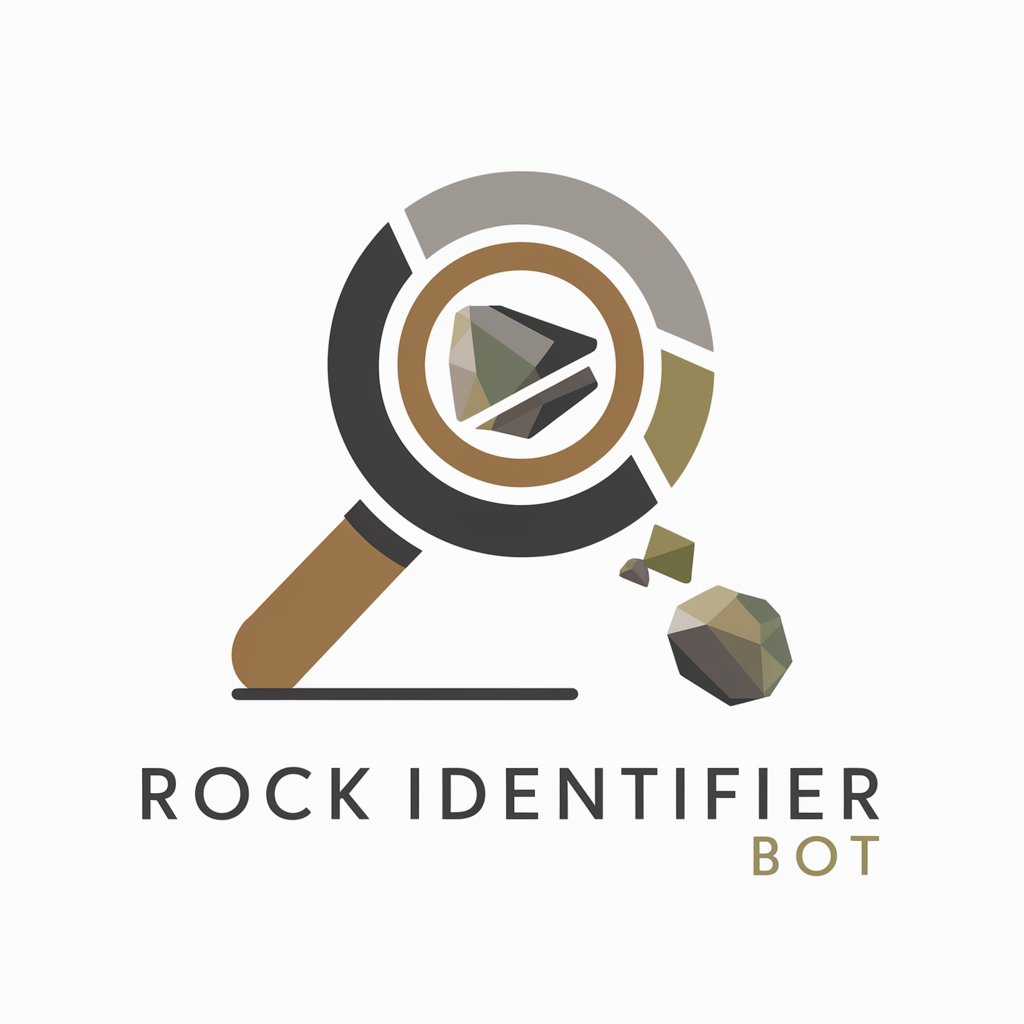
Rock Identifier Bot - Rock Identification Tool

Hello! Ready to explore the fascinating world of rocks?
Unveil the Earth's Secrets with AI
Can you explain the difference between igneous, sedimentary, and metamorphic rocks?
What are the key characteristics of granite?
How are sedimentary rocks formed?
What can rocks tell us about Earth's geological history?
Get Embed Code
Introduction to Rock Identifier Bot
Rock Identifier Bot is an advanced tool designed to assist enthusiasts, professionals, and students in the field of geology, by providing comprehensive information about rocks. It specializes in identifying various types of rocks, understanding their classification, formation, and usage. Through analyzing images or descriptions provided by users, Rock Identifier Bot can distinguish between igneous, sedimentary, and metamorphic rocks, explain their properties, and reveal their significance in Earth's geological history. For example, a user uploads a photo of a rock they found while hiking; Rock Identifier Bot can analyze its color, texture, grain size, and composition to identify the rock type and provide relevant information about its formation and uses. Powered by ChatGPT-4o。

Main Functions of Rock Identifier Bot
Rock Identification
Example
Identifying a granite rock from an image, detailing its coarse-grained texture and explaining its formation from slowly cooled magma.
Scenario
A student uses Rock Identifier Bot to identify and learn about the rocks in their geology assignment.
Educational Resource
Example
Providing detailed explanations of the rock cycle, including the processes that lead to the formation of sedimentary, igneous, and metamorphic rocks.
Scenario
A teacher incorporates Rock Identifier Bot into their lesson plan to enhance students' understanding of geological processes.
Geological Insight
Example
Explaining how the presence of specific rock types can indicate past environmental conditions or geological events, such as volcanic activity or sediment deposition.
Scenario
Researchers use Rock Identifier Bot to interpret the geological history of an area based on the rock samples collected.
Ideal Users of Rock Identifier Bot Services
Geology Students
Students studying geology or earth sciences can use Rock Identifier Bot as an educational tool to assist with rock identification, understand geological processes, and prepare for exams.
Outdoor Enthusiasts and Hikers
Individuals who enjoy exploring nature and wish to learn more about the rocks they encounter can utilize Rock Identifier Bot to identify rocks and understand their significance in the landscape.
Research and Professional Geologists
Professionals in the field of geology can use Rock Identifier Bot for quick rock identification, to aid in field research, and to gather data for geological surveys and studies.

How to Use Rock Identifier Bot
Start your journey
Access a comprehensive rock identification experience by visiting yeschat.ai for a complimentary trial, no signup or ChatGPT Plus required.
Upload an image
Upload clear, well-lit photographs of your rock specimen. Ensure the rock's distinct features are visible for accurate identification.
Provide context
Include any known details about the rock, such as its location of discovery or observed properties, to enhance the accuracy of identification.
Review the analysis
Receive detailed information about your rock, including its type, formation process, and significant characteristics.
Explore further
Use the provided insights to delve deeper into the rock's geology, history, and applications, or ask follow-up questions for more in-depth understanding.
Try other advanced and practical GPTs
ConspiracyQuery
Unveiling Truth with AI Power

Best Restaurants in New York City
Discover NYC's Best Eats with AI

Marketing Mentor
Empowering your marketing with AI

Tome of Wisdom - A 5E Compatible Idea Generator
Empowering RPG narratives with AI

GPT Prompt Generator
Inspiring Creativity with AI-Powered Prompts

! Mind Explorer !
Exploring Minds with AI

Cheer Me Up
Brightening Your Day with AI

Solar Panel
Empower Your Home with AI-driven Solar Solutions

Multilingual Biblical Explorer
Explore the Bible with AI, in multiple languages.

CrochetKitty AI
Crafting Your Crochet Dreams AI-Powered

DJango
Your AI-Powered Music Matchmaker

L'écrivain
Crafting Stories, Inspiring Writers

Rock Identifier Bot Q&A
What types of rocks can Rock Identifier Bot identify?
Rock Identifier Bot can identify a wide range of rocks, including igneous, metamorphic, and sedimentary types, by analyzing their visual and textual characteristics provided by users.
How accurate is Rock Identifier Bot in identifying rocks?
Accuracy varies based on image quality and information provided but aims for high precision by leveraging comprehensive geological databases and AI analysis.
Can Rock Identifier Bot determine the value of my rock?
While it provides detailed geological information, determining monetary value is beyond its scope. It focuses on educational and informational aspects.
Does Rock Identifier Bot offer any educational content?
Yes, it provides insights into rock formation, classification, and significance, offering a rich educational resource for students, hobbyists, and professionals alike.
How can I improve the results I get from Rock Identifier Bot?
For optimal results, provide high-quality, clear images of the rock from multiple angles and include any known context or observations about the specimen.